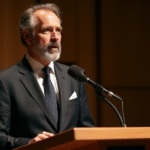Background on Donald Trump and His Trade Policy
Donald Trump, the 45th President of the United States, has been a prominent figure in global politics since his inauguration in January 2017. Known for his unconventional approach, Trump has frequently utilized tariffs as a political tool. His trade disputes have been global, but he has particularly targeted China, imposing new tariffs as high as 145% on certain Chinese products.
China’s Response and Current Trade Situation
In response to Trump’s aggressive tariffs, China has vowed to fight “to the end.” They retaliated with tariffs of 125% on US products and implemented measures targeting specific sectors and companies. This trade war has led to stagnant bilateral trade between the world’s two largest economies and significant volatility in global markets.
Negotiations in Geneva: A Step Forward
The ongoing negotiations in Geneva mark the first high-level meeting between the US and China since their rapidly escalating dispute caused global market turmoil. Representing the US are Secretary of the Treasury Scott Bessner and Trade Representative Jamieson Greer, while China is led by Vice Premier He Lifeng.
Initial Encouraging Signs
According to a statement from China’s official Xinhua news agency, the contact established in Switzerland is a significant step towards resolving the issue. Although specifics about the negotiation’s progress remain undisclosed, the meetings are considered a positive and constructive step towards reducing trade tensions.
Expert Opinions and Potential Outcomes
Ngozi Okonjo-Iweala, Director-General of the World Trade Organization (WTO), described the discussions as “a constructive step towards reducing the escalation.” Despite the modest 80% tariff reduction proposal by Trump, experts like Bonnie Glaser from the German Marshall Fund suggest that a potential outcome could be an agreement to suspend most tariffs during bilateral negotiations.
Lizzi Lee, an economist specializing in China at the Asia Society Policy Institute, anticipates a symbolic gesture that might ease tensions but won’t resolve fundamental disagreements. Meanwhile, Xu Bin, a professor at China Europe International Business School in Shanghai, fears that even reduced tariffs may still be too high for normal trade.
Key Questions and Answers
- Who is Donald Trump? Donald Trump is the 45th President of the United States, known for his unconventional political approach and frequent use of tariffs as a negotiating tool.
- What is the current state of US-China trade relations? The trade dispute between the US and China has led to stagnant bilateral trade, significant market volatility, and retaliatory tariffs on each other’s products.
- What are the negotiations in Geneva about? The negotiations aim to reduce trade tensions between the US and China, with potential outcomes including tariff suspensions or symbolic gestures.
- What do experts predict will happen? Experts anticipate either partial tariff suspensions or symbolic concessions, though they remain cautious about the likelihood of fully resolving fundamental disagreements.






